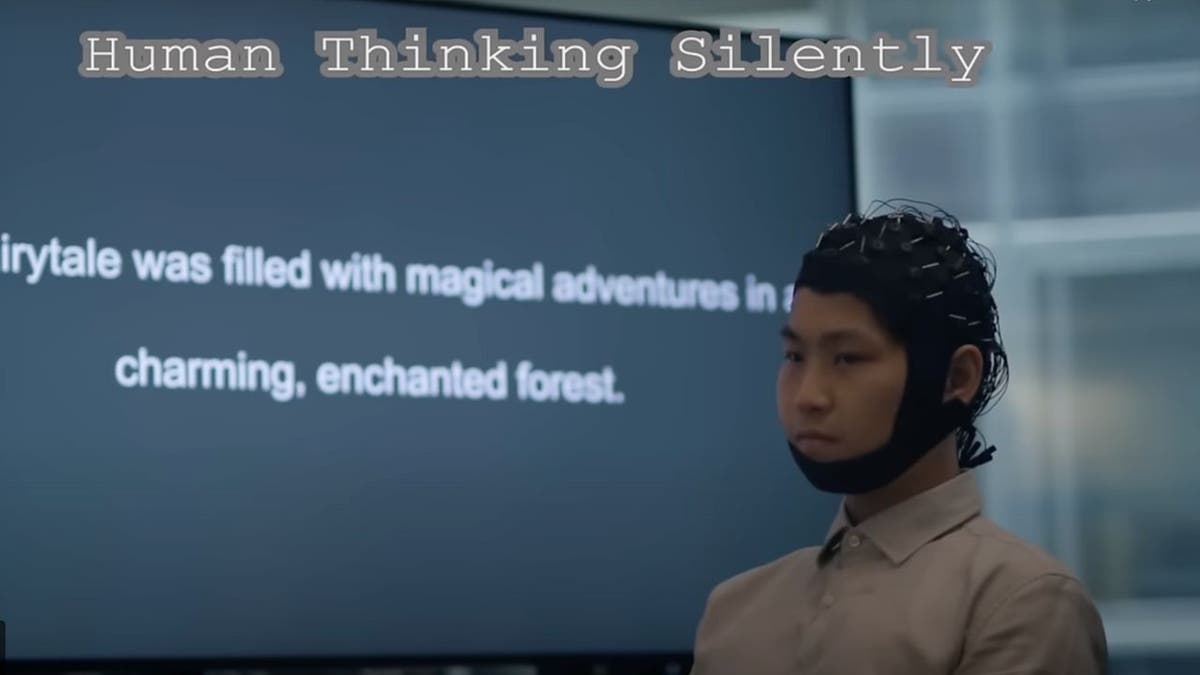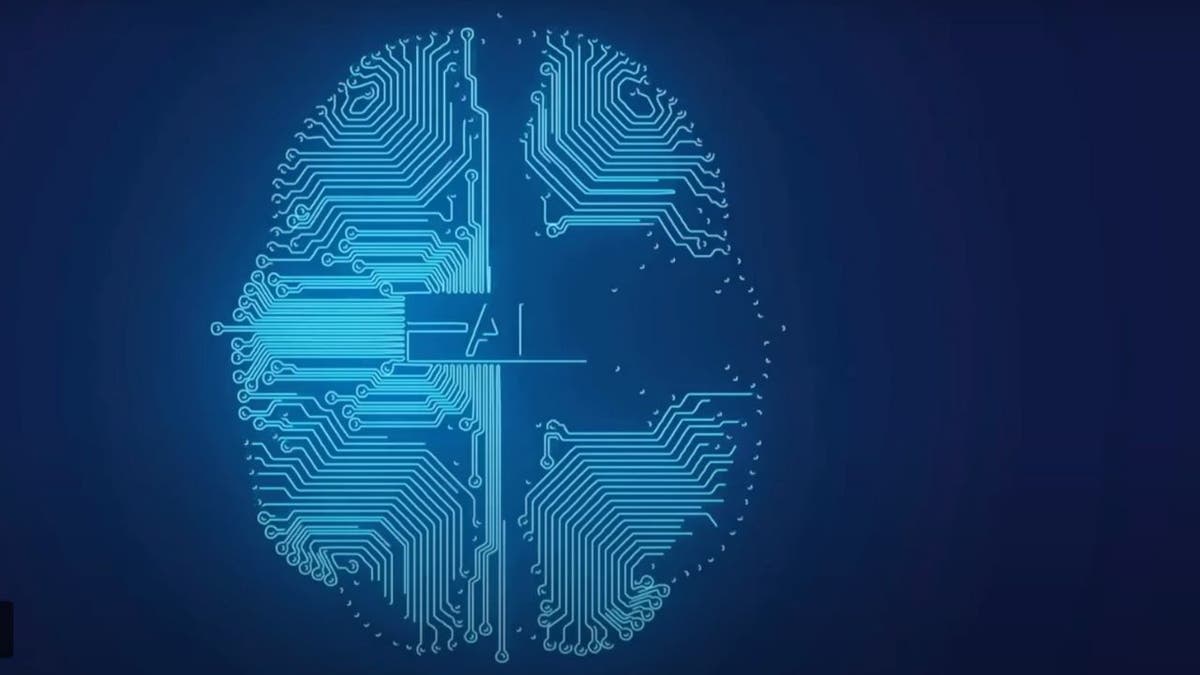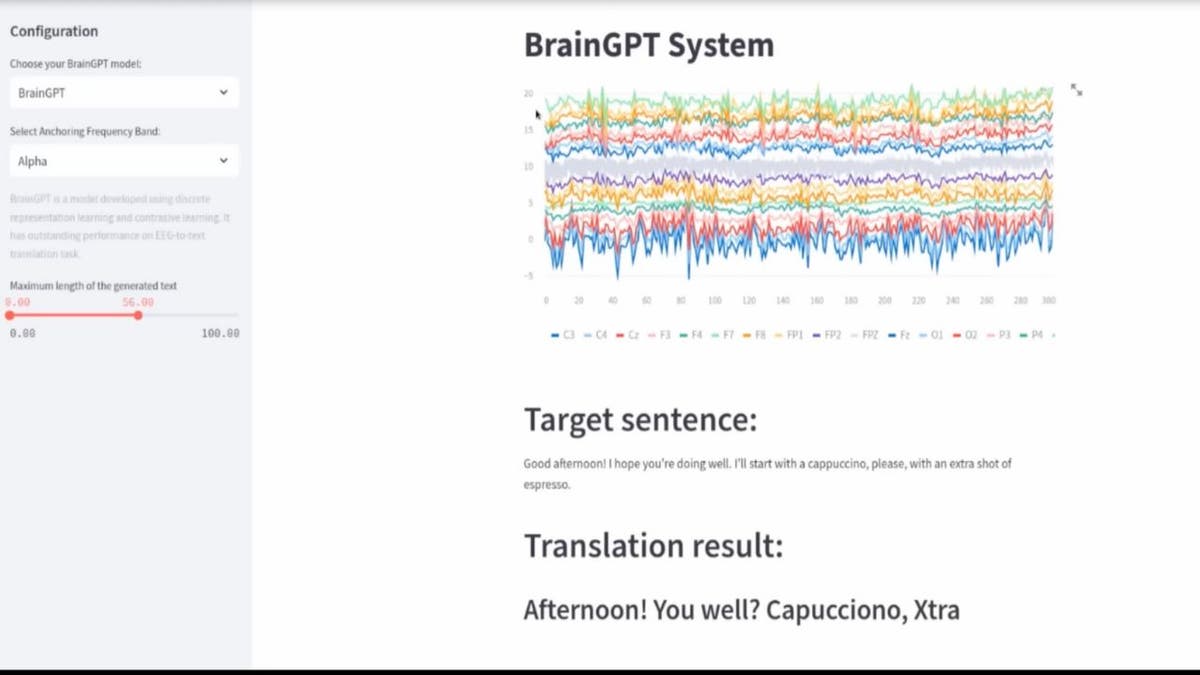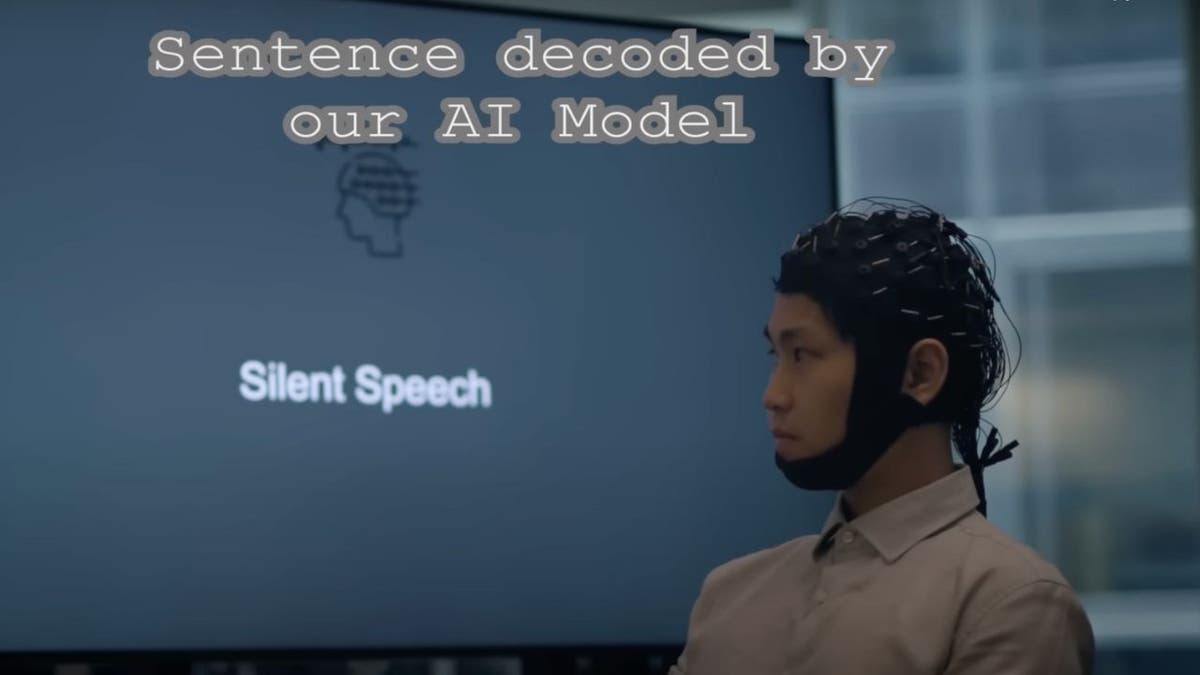[ad_1]
‘CyberGuy’ reveals how AI can talk tech
Kurt Knutsson discusses new technology developed by researchers who have created a portable, non-invasive system that can decode silent thoughts and turn them into text.
Imagine if you could communicate with anyone without saying a word, just by thinking. That’s the promise of a new technology developed by researchers from the University of Technology Sydney (UTS), who have created a portable, non-invasive system that can decode silent thoughts and turn them into text.
CLICK TO GET KURT’S FREE CYBERGUY NEWSLETTER WITH SECURITY ALERTS, QUICK VIDEO TIPS, TECH REVIEWS, AND EASY HOW-TO’S TO MAKE YOU SMARTER

DeWave technology in use (University of Technology Sydney) (Kurt “CyberGuy” Knutsson)
How does the technology work?
The technology, called DeWave, uses an electroencephalogram (EEG) cap to record electrical brain activity through the scalp. It then uses an artificial intelligence (AI) model to segment the EEG wave into distinct units that capture specific characteristics and patterns from the human brain. DeWave translates these units into words and sentences by learning from large quantities of EEG data.

DeWave technology results (University of Technology Sydney) (Kurt “CyberGuy” Knutsson)
MORE: HOW AI COULD REVOLUTIONIZE FULL-BODY SCANS AND CANCER DETECTION
Why this technology is a game-changer
The technology could aid communication for people who are unable to speak due to illness or injury, such as stroke or paralysis. It could also enable seamless communication between humans and machines, such as the operation of a bionic arm or robot.
The technology is also more accessible and convenient than previous methods of translating brain signals to language, which have either required surgery to implant electrodes in the brain, or scanning in an MRI machine, which is large, expensive, and difficult to use in daily life.

DeWave technology (University of Technology Sydney) (Kurt “CyberGuy” Knutsson)
DeWave is the first technology to incorporate discrete encoding techniques in the brain-to-text translation process, introducing an innovative approach to neural decoding. The integration with large language models is also opening new frontiers in neuroscience and AI, according to the researchers.

DeWave technology results (University of Technology Sydney) (Kurt “CyberGuy” Knutsson)
MORE: ELON MUSK’S CREEPY BRAIN-COMPUTER INTERFACE GETS GREEN LIGHT FOR HUMAN TRIALS
How the technology was tested
The technology was tested with 29 participants who silently read passages of text while wearing the EEG cap. The researchers found that DeWave was able to translate EEG signals into words and sentences with a high degree of accuracy, surpassing previous benchmarks.
The technology was also able to translate EEG signals without the need for eye-tracking, which is often used as an additional aid to segment brain signals into word-level units. This means that the technology can be used either with or without eye-tracking, depending on the preference and condition of the user.
The researchers also observed that the technology was more adept at matching verbs than nouns and that it sometimes produced synonymous pairs rather than precise translations, such as ‘the man’ instead of ‘the author.’ They explained that this might be because semantically similar words might produce similar brain wave patterns.
The researchers hope to improve the translation accuracy score of the technology, which is currently around 40% on BLEU-1, a measure of similarity between machine-translated text and human reference translations. They aim to achieve a level that is comparable to traditional language translation or speech recognition programs, which is closer to 90%.

DeWave technology in use (University of Technology Sydney) (Kurt “CyberGuy” Knutsson)
MORE: A DAD’S LIFE-SAVING INVENTION IS INSPIRED BY HIS WIFE’S NEAR-DEATH ORDEAL
What the future holds for this technology
The researchers hope that their technology will have a positive impact on society, especially for people who have difficulty communicating verbally. They also envision that their technology will enable new forms of interaction and collaboration between humans and machines, such as controlling robots or virtual assistants with thoughts.
They plan to continue their research and development of the technology and explore its potential applications and implications in various domains and scenarios. They also welcome feedback and suggestions from the public and potential users of the technology.
Kurt’s key takeaways
DeWave is a groundbreaking technology that can read your mind and turn it into text. It has the potential to revolutionize communication, assistive technology, and human-machine interaction. It is also a remarkable achievement in the fields of neuroscience and AI, demonstrating the power of discrete encoding and large language models. DeWave is still in its early stages of development, but it is already showing promising results and exciting possibilities.
What do you think of this technology? Would you like to try it out if you had the chance? Let us know by writing us at Cyberguy.com/Contact.
For more of my tech tips & security alerts, subscribe to my free CyberGuy Report Newsletter by heading to Cyberguy.com/Newsletter.
Ask Kurt a question or let us know what stories you’d like us to cover.
Answers to the most asked CyberGuy questions:
Ideas for using those Holiday Gift cards
Copyright 2023 CyberGuy.com. All rights reserved.
 FARRATA NEWS Online News Portal
FARRATA NEWS Online News Portal






